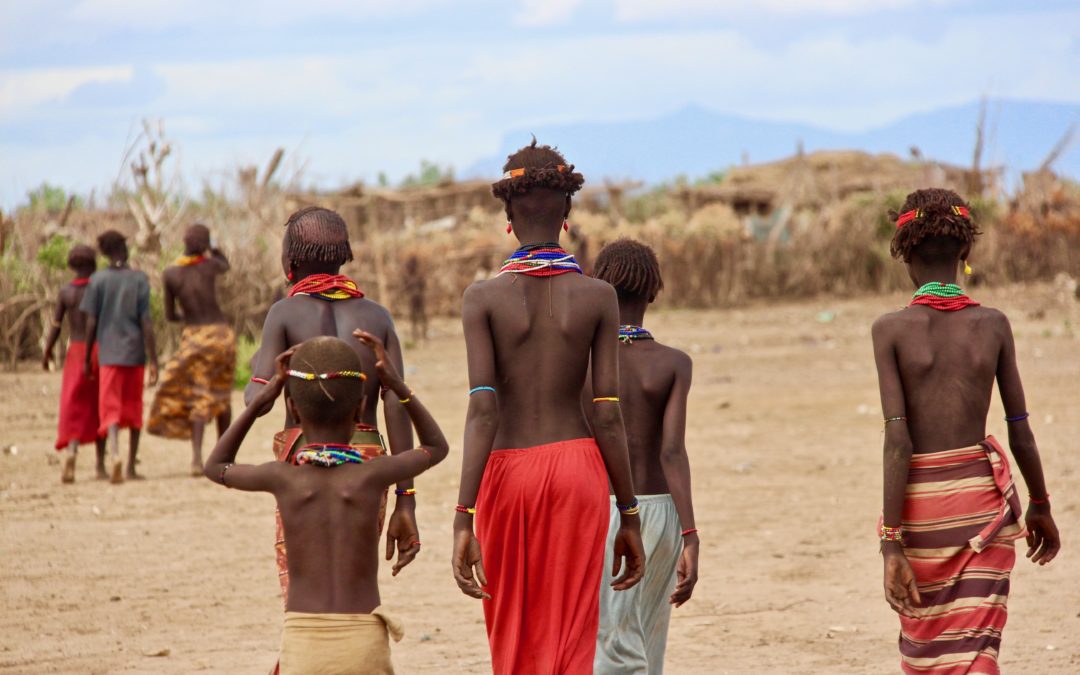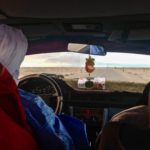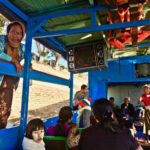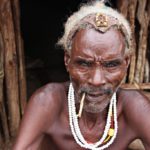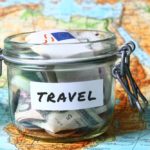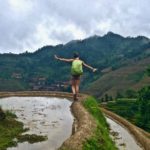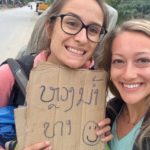Most of us live fast-paced lives, driven by mantras of carpe diem, YOLO, and “work hard, play hard.” Our intense desire to maximize our experience portfolio and live life to the fullest is fueled by the idea that life is short and we have to move fast in order to cram everything in. We unconsciously favor quantity over quality — and it affects how we approach travel, as well.
If the anticipation of arrival eclipses the journey itself and a demanding itinerary exhausts us until the anticipation of departure sets in — where’s the meaning in that?
Slow travel is a mindset that requires us to redefine our relationship to time, to see it as plentiful rather than scarce. It requires us to take a deep breath and say, “I have the time” or, more powerfully, “I will make the time.” It’s not about how far we go, how fast we arrive, and how much we see, but about the depth of our adventures, the warmth of our relationships, and our closeness to the world itself.
Slow travel rebukes one of the greatest epidemics facing our generation today: the fear of missing out. It’s about chucking the Lonely Planet into the garbage, hopping a train to the place we’ve never heard of, and staying put.
For instance, I’ve been to Taiwan twice, but I still haven’t been to the top of the famous Taipei 101 building. Each time, I was more interested in staying with locals, hitchhiking up the coast, sleeping in temples, and taking boats to islands with no names. I experienced Taiwan on my own terms, unafraid to respond with an unapologetic “no” when other foreigners asked me if I had visited this temple or that mountain. No, and I am not afraid that I missed out.
If we’re not careful, travel can become an ordinary consumer good, a game of keeping up with our neighbors and prioritizing hit-and-run visits to trendy places that yield impressive profile pictures. I know people who have traveled 36 hours across the world to spend a week in Australia, just to tick off another continent. To them, travel is a status symbol, not a by-product of genuine love and curiosity.
Travel should be savored like a long, five-course meal accompanied by fine red wine, eaten on a terrace at sunset with a few close friends. Travel can provide us a window into what lurks beneath the surface of a place. Hit-and-run tourism simply confirms what we think we know and teaches us what we knew we were already going to learn. We may stand in front of a famous monument and marvel how its “even more beautiful than the pictures,” but we lose out on learning what we couldn’t have predicted.

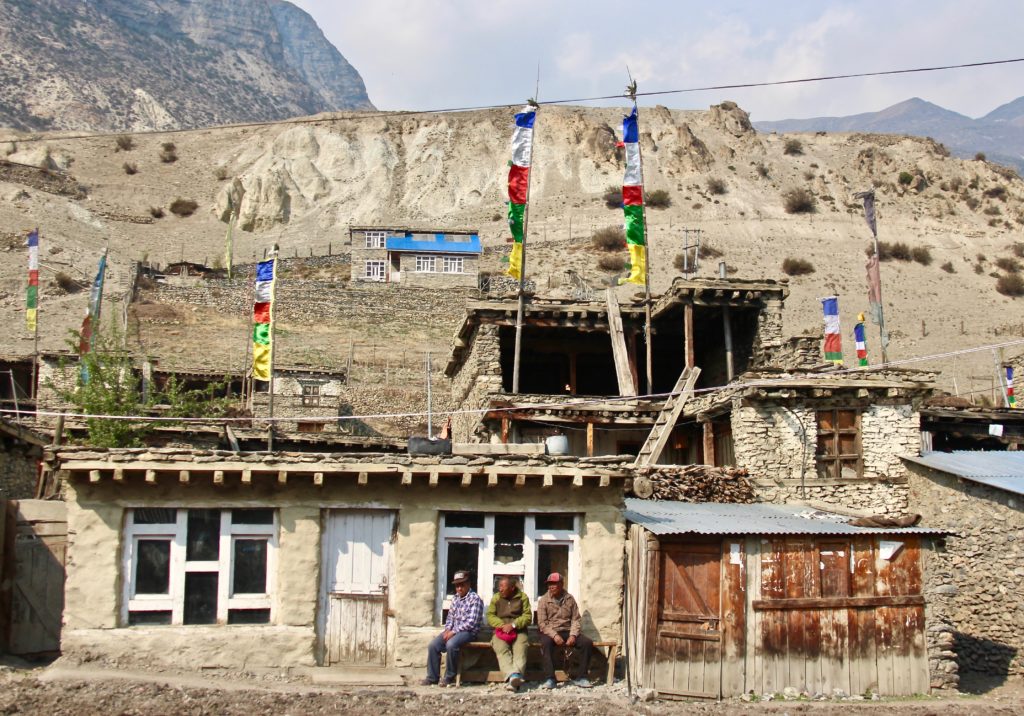

Slow travel is about introducing an element of delightful uncertainty into our journeys. If we fly in and out of Beijing and have 7 days to see the sites, there is a pretty safe range of what we can expect to see and experience. If we fly into Beijing and give ourselves 3 weeks to motorbike down to Shanghai, we gain access to a kingdom of sweet serendipity that belongs exclusively to our hearts and memories. This is the kind of adventure that leaves a fingerprint on us for the rest of our lives, enriched with colorful stories that were not packaged for mass consumption. This is when the magic happens.
Travelers have choices to make. We can spend a week bouncing from Barcelona to Granada to Madrid, or we can spend a week couchsurfing in Segovia, hiking through nearby villages in the mornings, taking Spanish lessons in the afternoons, and cooking with our hosts in the evenings. My guess is we will learn more about Spain in that week than a whirlwind tour of the “must-sees.”
We can spend two weeks a year on warp-speed vacations, or we can save our money, quit our jobs, and spend months — even years — slow traveling. I once met a guy who walked 1,000 kilometers from Mozambique to the Wild Coast of South Africa, stopping to volunteer at various eco-lodges along the way. That trip alone took him two years. Then there was the girl who spent 12 months driving from Switzerland to West Africa and then stayed on to live in Burkina Faso. When I asked what she was doing there, she shrugged and smiled fondly, “Just being.”
The usual tourist who parachutes into a country for 10 days winds up observing how people live their lives in other parts of the world; slow travelers stop observing from a distance (both a physical and cultural distance) and become part of the landscape. They develop relationships, learn the language, engage in the community, and speak intelligently about the place after they return home. They shop in the local markets, drive the backroads, and put down their cameras in favor of conversation. They linger, guilt-free, because they have no checklist.
Slow travelers know that life back home moves fast and traveling slowly allows them to calibrate themselves to the pace of a new place and culture. They experience long meals with the Italians, partying until dawn with the Brazilians, and sipping coffee on lazy Sundays with the Ethiopians.
For slow travelers, it’s amazing to see the pyramids, but it’s more amazing to spend a couple months living in a tiny apartment in the back alleys of Cairo, studying Arabic, and smoking shisha with a new group of friends. Slow travelers don’t hostel-hop across South America; they choose to volunteer in the Amazon. They don’t “do” Southeast Asia in 6 weeks; they spend those 6 weeks off the radar in outer Mongolia.
Slow travel is a mindset, one we can employ at home in our own countries, even in our own cities. We can spend Sunday exploring a new park, eating a lazy lunch at a small cafe we’ve never tried, or wandering into new art gallery to chat with the owner. We can practice smiling more easily, speaking readily with strangers, and going somewhere on bicycle instead of car. Fundamentally, it’s about doing even ordinary things with a purposeful energy. It’s about enthusiastically seeking out new things and new people. It’s about appreciation, openness, and engagement.
It’s about slowing down the pace of life so that we are not just gaining more experiences, but gaining more value in each experience. Slow travel reinvigorates us and elevates our level of curiosity about our communities — at home and throughout the world.




